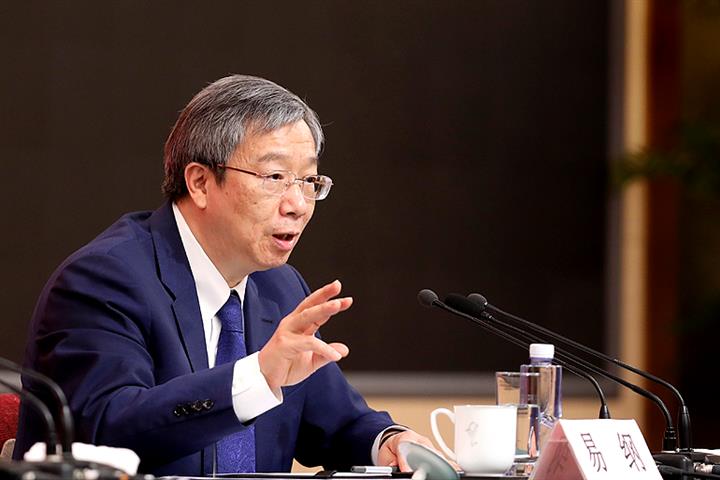 China’s Monetary Policy Is Not Set to Further Ease, But Be Targeted, PBOC Governor Says
China’s Monetary Policy Is Not Set to Further Ease, But Be Targeted, PBOC Governor Says(Yicai Global) Aug. 10 -- China’s monetary policy is not expected to continue ease but be more prudent, conservative and targeted in the second half, financial analysts told Yicai Global in response to recent words by Yi Gang, governor of the People’s Bank of China, on the country’s monetary policy in the second half.
Monetary policy must be more moderately flexible to ensure its implementation helps companies grow and to stabilize employment, Yi said in an interview with Xinhua News Agency over the weekend.
He stood by the central bank's second-quarter monetary policy implementation report, reiterating that monetary policy must be "moderate." The central bank will maintain a temperate and reasonably growing financial aggregate to avert and resolve major financial risks and accelerate and advance financial reform and opening to promote healthy economic and financial development in the period, he stated.
This is the third time the central bank has aired its views on monetary policy within a week. The PBOC did so in its second-half work video conference on Aug. 3 and the second-quarter monetary policy implementation report that came out on Aug. 6.
Yi’s latest talks on the monetary policy set a slightly different tone from the central bank’s first-quarter monetary policy implementation report because he did not cite the report’s statement that, “aggregate policy tools will be used to keep liquidity reasonably abundant,” financial analysts Yicai Global interviewed noted.
The central bank’s current policy ideas are to keep a close eye on the fluctuations of short-term interest rates, and keep the DR007 -- inter-bank seven-day pledged repurchase rate -- fluctuating between 2 percent and 2.3 percent, and the PBOC will adjust short-term liquidity through reverse repo open market operations once the DR007 is lower than 2 percent or steadily higher than 2.3 percent, Yan Se, chief economist at Founder Securities, told Yicai Global.
Hands-Off
“The central bank does not plan to interfere with long-term interest rates too much but will continue to further reduce corporate financing costs and loan interest rates through structural monetary policies that can directly reach market entities, such as re-lending,” Yan stated. “The central bank will also use reverse repo operations in the near future to maintain a slightly loose margin for liquidity to support local governments in issuing special bonds," he added.
The PBOC is less likely to lower policy interest rates such as the bidding interest rate for the mid-term lending facility and the seven-day reverse repo rate, Wang Qing, chief macro analyst with Golden Credit Rating International, predicted, saying the overall corporate financing costs, including general loan interest rates, are expected to continue to plunge.
"Monetary policy is anticipated to continue its trend in June and last month and won’t be too loose, but will stay stable as the national economy gradually improves and deflation ebbs,” Yan said, “The probability of a reserve requirement ratio cut this month is low, but monetary policy next month and in October is still fraught with uncertainty."
"A moderate monetary policy will be judiciously loose rather than adopting strong stimulus policies, so a steady [one] will be implemented in the second half," said Ming Ming, deputy director of the research institute with CITIC Securities.
The central bank’s future monetary policy will continue its precise trickle irrigation effect as a structural monetary policy tool to be targeted with an absence of quantitative easing tools, all analysts interviewed by Yicai Global said.
The People’s Bank’s existing structural monetary policy tools consist of differentiated commercial bank deposit reserve system and targeted RRR cut policy, re-lending and rediscounting and innovative monetary policy tools directly reaching the real economy, per the central bank’s second-quarter implementation report on monetary policy.
Editor: Ben Armour